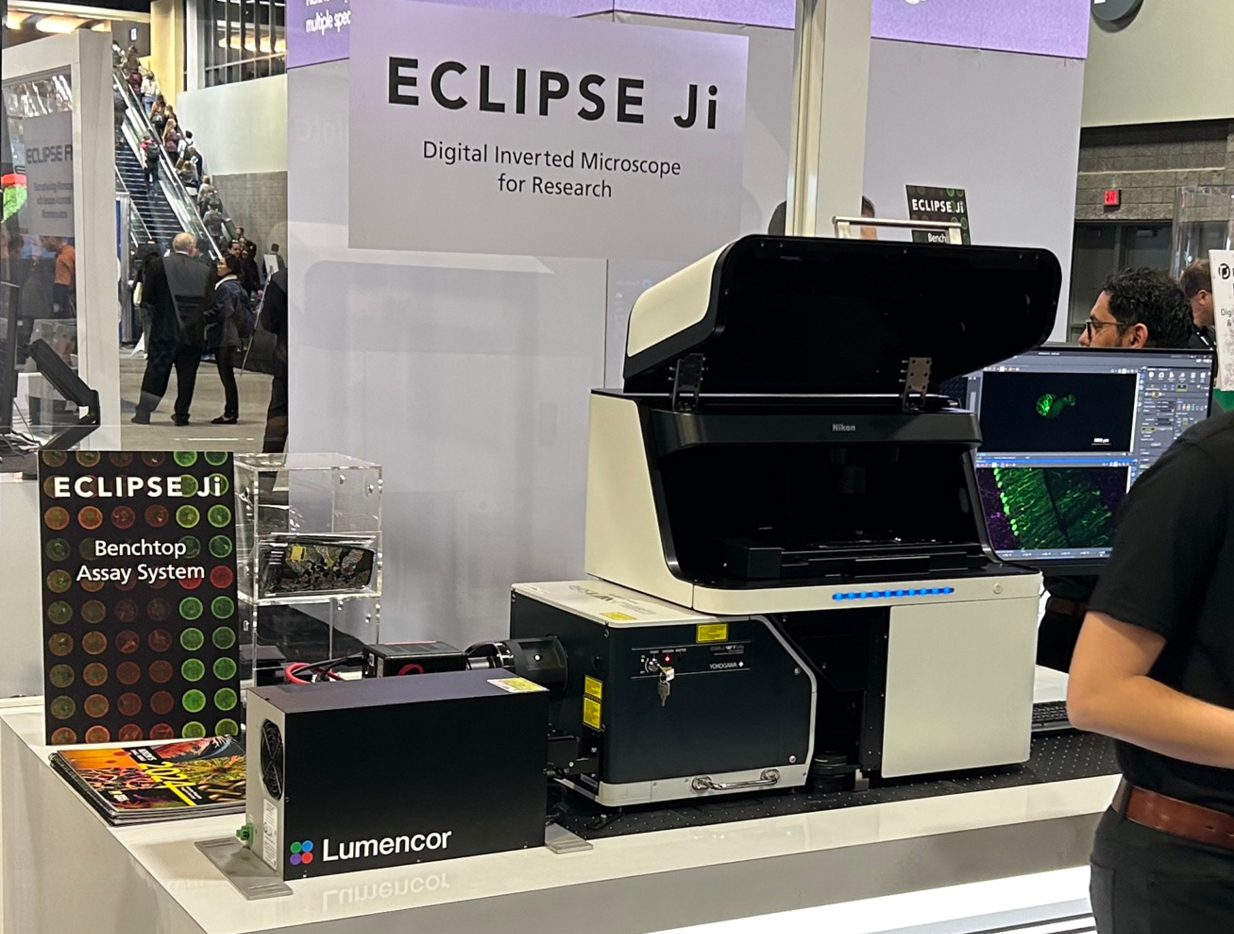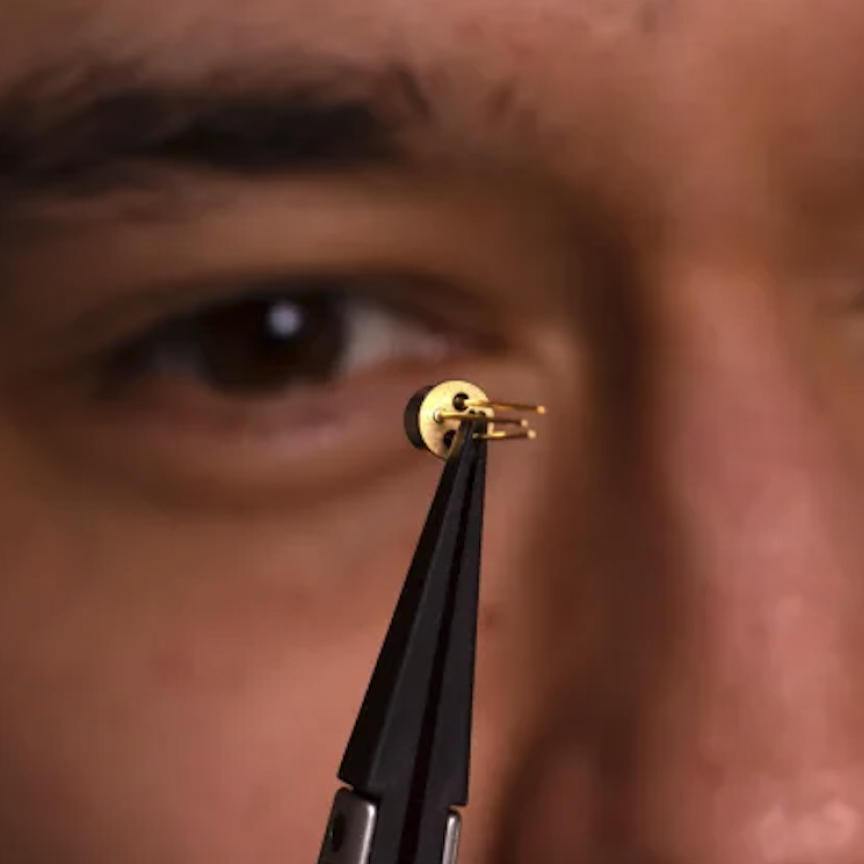Established in 2006 by husband and wife team Claudia and Steven Jaffe, Lumencor has demonstrated over almost two decades its innovation, reliability, and performance in providing cutting-edge Light Engine technology to facilitate advancements in scientific research, clinical, and industrial processes.
From humble beginnings – the company was initially formed in the couple’s garage while the pair were working at Steven’s start up company, Quantum Vision, which developed Light Engines for displays like HDTV, electronic billboards, headsup displays in cockpits and the like. They pride themselves on listening to customers, and train their expert team to do so.
A primary focus for the firm has been using powerful, intense light, to support metrology applications. Claudia Jaffe Co-Founder and Chief Commercial Officer at Lumencor explains: “It’s a generalisation, but I think it’s fair to say that light is a somewhat underappreciated tool! It plays a critical role in all of the applications that we serve – it’s referred to as an accessory, something that you just plug into a microscope, for example, and then you push ‘go’. The truth is that lighting is arguably the most critical subsystem in all of microscopy, because it determines the lower detection limit, the sensitivity, the dynamic range, the signal-to-noise, contrast, and imaging resolution.”
For Lumencor, light is at the heart of everything – hence the company’s name, and Jaffe believes what sets it apart from the rest is in addition to off-the-shelf, plug-and-play illumination products, Lumencor gravitates towards more difficult lighting challenges.

Lumencor took the best from two worlds and developed a unique combination of ZIVA Light Engine and Yokogawa CSU which delivers stable, uniform, bright illumination enhanced by spinning disk confocal with microlens. It results in an unprecedentedly resolved high-speed imaging of 3D structured biological tissue captured by Nikon’s new Eclipse Ji digital inverted microscope (Credit: Lumencor)
Pushing boundaries for instrumentation illumination
Initially focusing on coloured light products, Claudia and Steven soon came to recognise solid-state, white light as an impactful alternative to arc lamps as a key development. Jaffe explains: “We came up with a series of Light Engines with different flavours of white light, various colour temperatures as xenon, metal halide and halide bulb alternatives. We then turned our attention to multi-line UV-VIS-nIR outputs and eventually to turnkey lasers, because the demand for irradiance just keeps growing. I think our evolution has tracked with what’s happening in the field of metrology. The demand for instrumentation is pushing boundaries and we just keep stepping up our game.”
A great example of this is in the company’s latest innovation, designed to help researchers overcome the challenges associated with traditional lasers for confocal imaging of live cells, by increasing wavelength flexibility without increasing cost. The ZIVA Light Engine for Yokogawa CSU offers seven independent, solid-state lasers at a lower price than the CSU scanner itself. Traditional offerings are typically four lasers and rival the cost of the CSU itself. Designed to enhance brightness, spectral breadth, and field flatness, ZIVA can seamlessly integrate with Yokogawa CSU-W1, X1, and SoRa super-resolution microscopy. The refined lasers, controlled electronically, eliminate the need for complex laser service, allowing researchers to focus on their scientific work. Moreover, they are long-lived and maintenance free.
Amongst ZIVA's sophisticated features are bandpass filters, despeckling, and precision-engineered adapters for easy alignment on Yokogawa CSU-W1 or CSU-X1 with electronic wavelength selection and no light leakage. Precision ray-bundle engineering means ZIVA provides intense, uniform sample-plane illumination.

Lumencor’s CELESTA Light Engine standing at the origin of the sophisticated imaging ensemble which also features Crest V3 spinning disk confocal and Nikon Ti2-E microscope. It orchestrates the fast-switching multicolour illumination revealing the highly resolved tissue structural details at the sub-cellular level (Credit: Lumencor)
Helping OEMs from cleanliness to sustainability
Aside from the product innovation, Lumencor also keeps on top of the hottest topics that impact its customers. As such, the company’s commitment to sustainability is highlighted with Light Engines being famously mercury-free, and the company's engagement with the United Nations Environment Programme underscores its dedication to green products and environmental responsibility. Says Jaffe: “All industries really need to be making green products. It’s been somewhat disappointing that in most research and university campuses, the centre of dirtiness and contamination lies in the laboratories, even with all the best efforts that LEED-certified buildings offer. If you bring this idea of ‘cleanliness’ to building managers, they often don’t know that mercury contamination is at the heart of the lighting that they’re employing in these labs. We can do better. Lumencor is committed to help.”
For its own processes, Lumencor developed a dedicated in-house regulatory and certification laboratory to make sure that its products ship with safety and cleanliness directives from independent quality and regulatory organisations and government agencies, as well as through self-certification. This has had the added benefit of taking the pressure off OEM customers by accelerating timelines as the industry moves forward from the supply chain difficulties post-pandemic. What’s more, it has helped to relieve what can often be something of a headache in terms of regulation. Jaffe says: “Everyone likes to lament the regulatory world, but technology is getting very powerful and so safety is really a key value of ours. Setting up an internal regulatory lab speaks to this priority and can greatly enhance our OEM’s new product time to market.”
What’s next for Lumencor?
Looking to the future, the technology being developed by Lumencor’s OEM customers will continue to drive the firm. With demand already increasing for more sophisticated engineering and ever more sensitive quality testing tools, Lumencor is not resting on its laurels, far from it. The company is continuously investing in growing its facilities and team to stay ahead of the curve regarding high volume manufacturing of quality instruments.
In the nearer future, Lumencor will have a presence at SPIE Photonics West, which takes place in San Francisco in January. The company will showcase its highest end lasers, and look for creative and demanding applications in which to find them homes. You can find the Lumencor team at booth #263.
Find out more information about Lumencor
Claudia Jaffe is Co-founder and Chief Commercial Officer at Lumencor. With a doctorate in Bioanalytical Chemistry, University of Pittsburgh, Claudia Jaffe has developed, published and patented a variety of electrochemical and photoelectrochemical sensors and bioanalytical chips, for high throughput analyses employing enzymology, immunology and genomics. Compound library screening in lab-on-a-chip devices and Q-PCR on customizable microarrays fortify her background.
As a co-inventor in nearly all the company’s patents, Dr. Jaffe oversees technical support, sales, marketing, and business development for Lumencor’s microscope lighting products and scanners.


